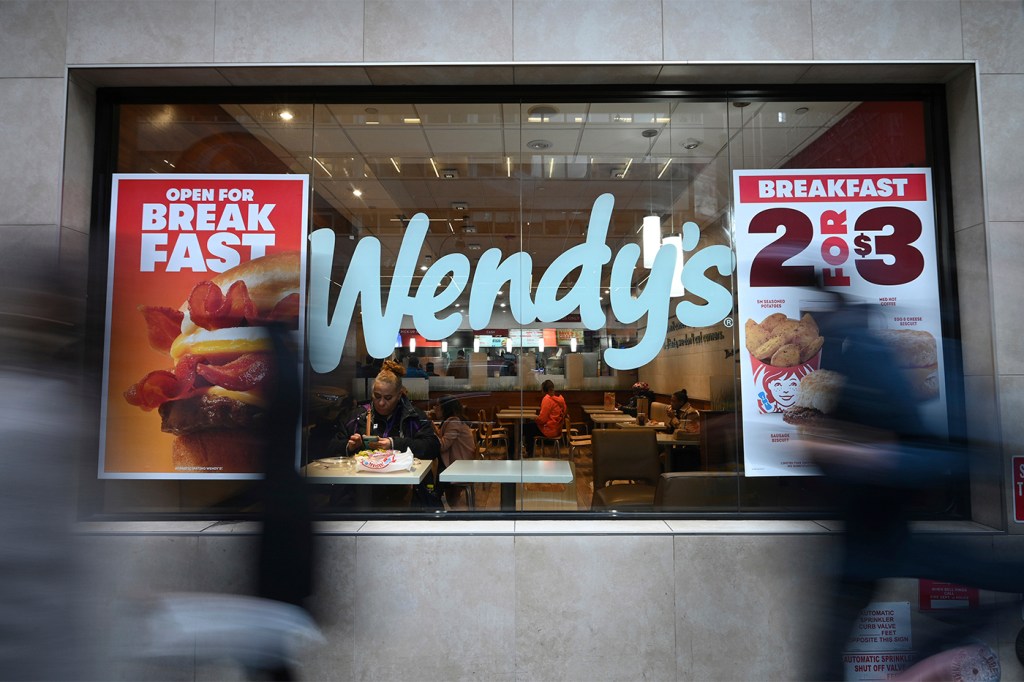How Wendy’s ‘dynamic pricing’ is both old news — and the future

Bars have happy hours (at least bars outside Massachusetts), and many restaurants have early bird specials.
Now fast food is getting in on the action — as Wendy’s recently announced it would begin incorporating “dynamic pricing” in 2025.
Northeastern University food pricing expert John Lowrey says the move “makes sense.”
“It’s been done awhile, and I think it makes sense to probably make the company some money,” says Lowrey, an assistant professor in supply chain and information management. “There’s all sorts of dynamic pricing schemes where they’re trying to stimulate demand, push perishing foods out the door for some sale and then — in its place — produce fresher inventories.”

Dynamic pricing is the practice of varying the price for a product or service to reflect changing market conditions — typically raising prices when demand is high, and lowering prices when demand wanes.
Wendy’s announced on an earnings call in February that it would roll out “dynamic pricing” enabled by digital menus as one of several new features in 2025. The announcement attracted little notice until several major news outlets used the term “surge pricing.” Outrage ensued — progressing from the internet to the U.S. Senate.
Featured Posts
The fast-food chain issued a blog post on Feb. 27, to clarify that it would not raise prices in times of high demand, however, only lower them during traditionally slower periods.
But despite the public relations debacle surrounding its unveiling, dynamic pricing is not that strange in food circles.
“I think a lot of firms have been doing this — maybe not as bluntly as dynamically pricing digital menus — but it’s been going on in the background in different settings and in different contexts,” says Lowrey, whose research focuses on food donations and supply chain issues.
Food, and fast food in particular, are well-suited to dynamic pricing, Lowrey explains. He compares food to a concert ticket: initial prices are set based on supply and anticipated demand; prices can change as the demand increases or decreases for the product; and there is an expiration date — once the food is spoiled (or the day after the concert) the product is worthless.
As regards fast food, specifically, Lowrey notes that fast-food customers are typically more price sensitive than those who frequent fine dining — you raise the price of a meal at a Michelin-starred restaurant by $150 and the clientele still pays; you even suggest raising the price of a Wendy’s meal and the chain offers discounted cheeseburgers for the next month. Fast-food prices already vary regionally and internationally — just think of the Big Mac Index. Lots of competition in the fast-food industry also gives consumers plenty of options if they feel priced out of one chain.
So, Lowrey sees many benefits in Wendy’s plan.
First, it is a way to reduce food waste, as a reduced price will induce customers to purchase products that would otherwise be thrown away.
That can result in a fresher product, raising the average quality of the food, Lowrey says.
Then, fresher, better food also can bring in more profit.
“People could purchase more of that product, and then in its place you can have your labor then producing fresher inventory ready for the next person to come in and pay a full price,” Lowrey says.
Dynamic pricing also can expand Wendy’s customer base to appeal to those attracted by the lower prices, and can encourage people to buy more because they feel they are getting a deal, Lowrey says, also enabling the chain to generate more revenue and profit.
Finally, Lowrey says that Wendy’s plan could be good for efficiency in both inventory and labor. More predictability in demand can result in more efficient staffing levels and a more aligned inventory — better matching the supply of and demand for products. Spreading demand out over a longer period — especially in a restaurant in a fixed amount of space offering a fixed amount of product — also improves the customer experience.
“If I suddenly have this big flux of people coming in from 5 p.m. to 8 p.m. all expecting high quality, high-quality products, I’m not going to be able to meet that demand,” Lowrey says. “So instead, maybe I can segment my customer base and have people that are price sensitive come in earlier and I can offer them a lower quality or a lower price product.”
That being said, Lowrey said “the devil’s in the details.”
For instance, will the shift to digital menus make dynamic pricing easier and cheaper for Wendy’s to implement? Who makes the decisions on pricing? The local franchisee that caters to a late-night crowd outside a sporting event every Friday and Saturday night, or somebody in corporate?
“Ultimately, I think it’s a demand-management plan whereby they want to try to encourage some customers at certain periods and they can better match supply and demand, and then other customers come in during other periods and again match supply and demand,” Lowrey continues. “I don’t think dynamically pricing invariably hurts all consumers.”










